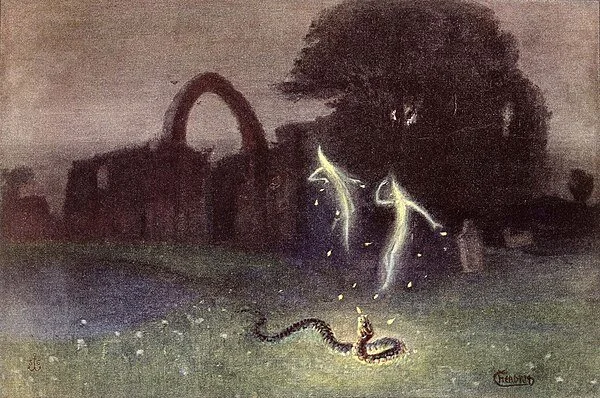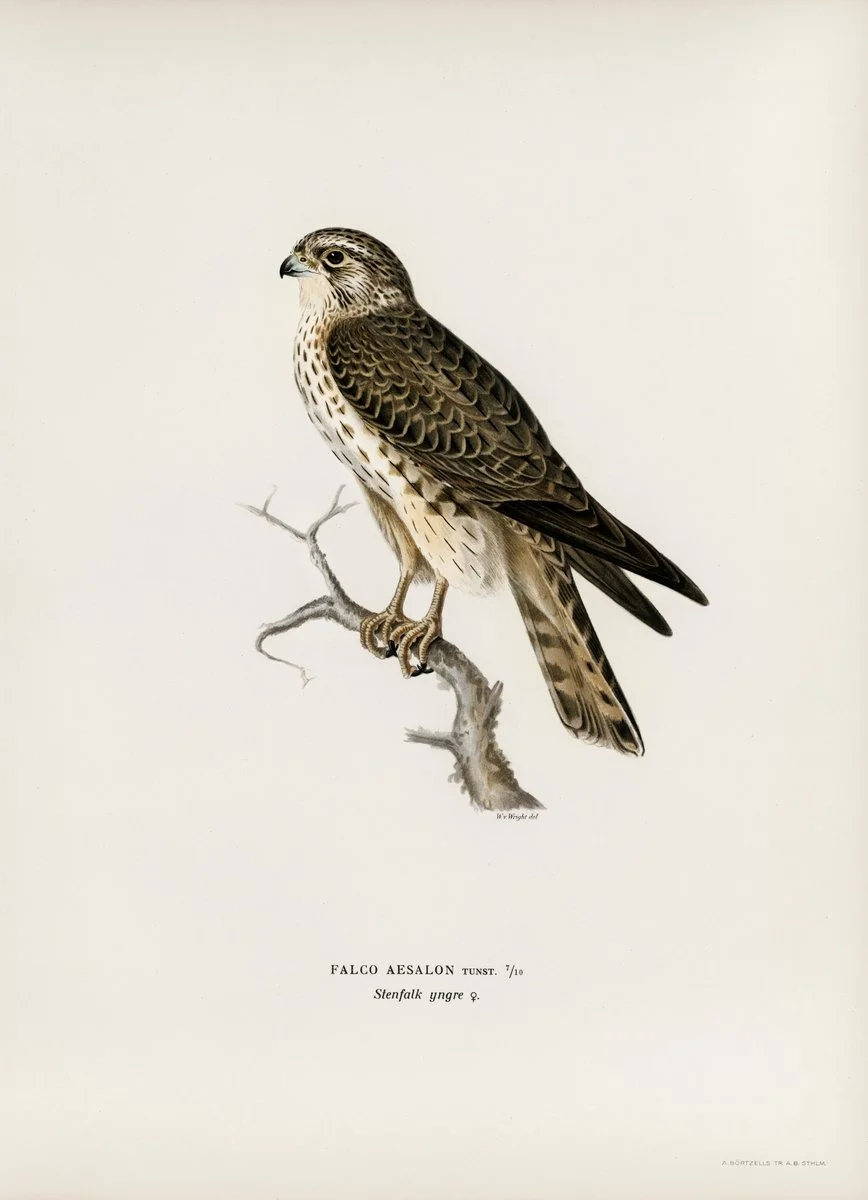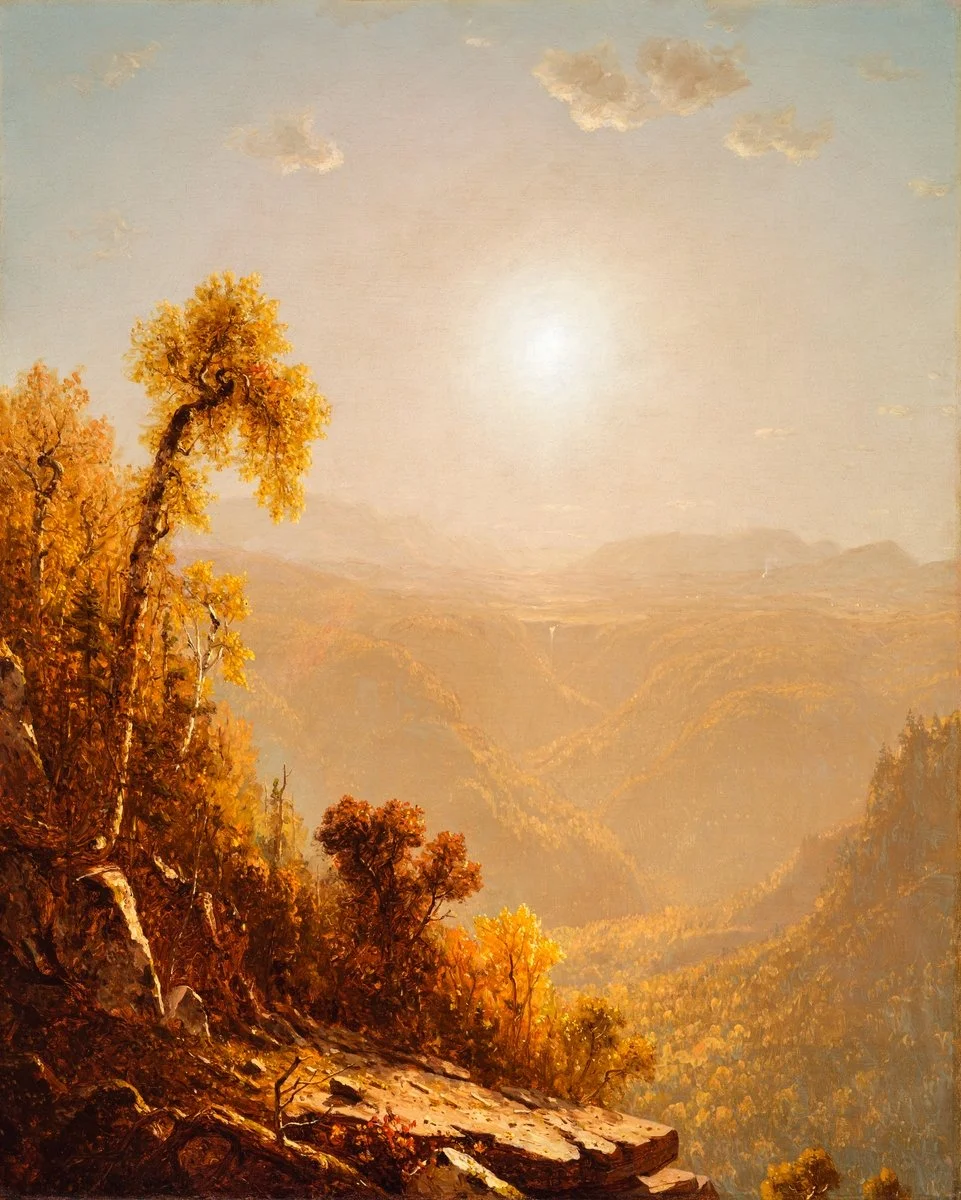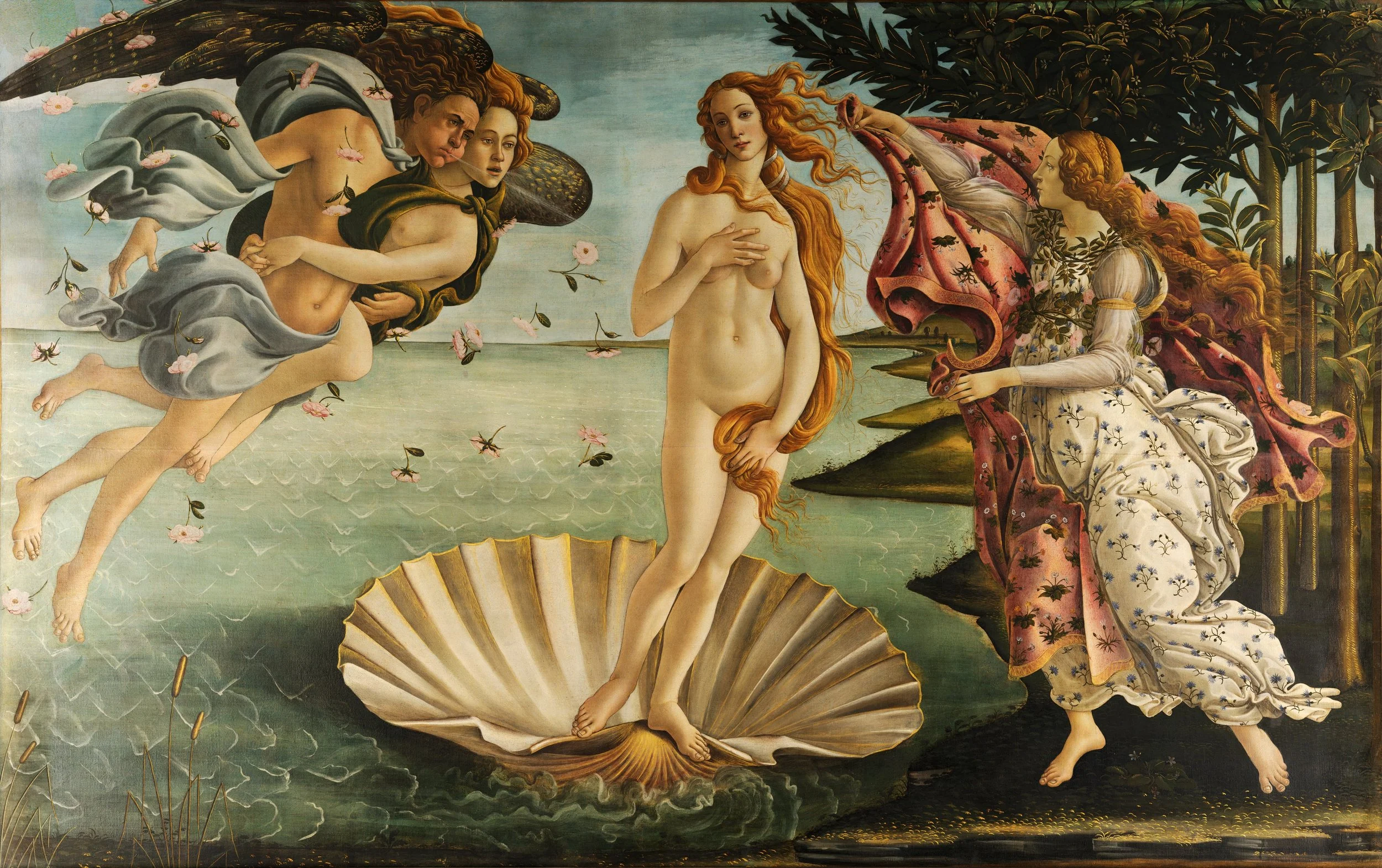
The Feast of the Dwarfs
In this Victorianized Icelandic fairy tale, two fugitives find refuge on an enchanted island ruled by dwarfs and a sorrowful giantess, whose world unravels the moment a Christian blessing crosses the air. The result is a fascinating blend of Norse supernatural lore reshaped by 19th-century Christian sensibilities.
Demeter
A sweeping look at Demeter’s evolution from earth-mother to goddess of agriculture, this excerpt traces her central role in Greek myth, from the abduction of Persephone to the origins of the Eleusinian Mysteries, revealing how ancient storytellers used her tale to explain the seasons, civilization, and the promise of rebirth.
Donkey-Skin
In Perrault’s Donkey-Skin, the grotesque and the marvelous collide: a princess, pursued by her father’s delusion, cloaks herself in a beast’s hide and vanishes into obscurity. She keeps her splendor hidden until a ring, slipped unnoticed into a cake, reveals her secret and restores her to love, dignity, and a rightful place in the world.
Aphrodite’s Many Faces: Love, Power, and Devotion in Greek Mythology
If love is the most inexhaustible of human concerns, it is also the most fraught. In mythology, love is never a mere emotion — it is a force, a weapon, a punishment, and, at times, a divine calamity. Nowhere is this clearer than in the ancient world’s vision of love as embodied by its gods.
Why the Wind Wails
A love story between a chief’s daughter and the invisible Wind unfolds with mythic clarity and deep melancholy, where longing transcends the earthly and echoes into the sky. Cowles’s retelling is simple, but devastating: the voice in the wind is grief, and the face in the moon is waiting.
The Smith and the Demon
A wily blacksmith traps a demon through wit and iron, only to discover that bargaining with darkness never ends cleanly. Ralston’s folktale hums with the clang of hammers and hellfire, where cleverness courts damnation and escape is always partial at best.
British Goblins: Fairy Tales and the Ancient Mythology
In this richly woven survey of Welsh folklore, Sikes maps a world where fairies dance in moonlit rings, changelings cry in cradles, and the veil between myth and memory is thin as mist. Less a collection of tales than a cultural archaeology, it captures the haunted lyricism of a land where belief lingers in every shadowed glen and echoing hill.
Hawaiian Legends Resembling Old Testament History
Hyde’s account, filtered through missionary eyes, draws parallels between Hawaiian origin stories and biblical narratives—not to elevate the former, but to domesticate them. Yet beneath the comparisons, the legends pulse with their own elemental power: floods, brothers in conflict, sacred taboos—echoes not of borrowed faith, but of a cosmology shaped by island, ocean, and fire.
Jupiter Determines to Destroy the World
The gods look down and find the world rank with blood and treachery, its cities swollen with crime and pride. In Ovid’s telling, Jupiter’s decision to unmake humanity is not a stormy act of wrath, but a cold recalibration—a divine flood issued not from fury, but from disgust.
Croglin Grange
A genteel country house, a moonlit lawn, and the slow, dreadful approach of something scratching at the window—Croglin Grange is less ghost story than early vampire myth, told with the precise domestic detail that makes its horror feel uncannily plausible. Hare’s anecdote lingers not for its gore, but for its composure: evil enters quietly, and returns again.
Introduction to Plant Lore and Legends
Folkard’s introduction offers a dense and dazzling catalog of the world's floral mythology—an herbal grimoire where every leaf and blossom carries symbolic weight, medical promise, or ancient superstition. At once antiquarian and poetic, it opens the door to a world where plants are not background, but characters: whispered to by witches, consecrated by priests, and feared by those who know too much.
The Legend of Saint Nicholas
Framed as a tale for children but echoing the structure of sacred legend, Faulkner’s Legend of Saint Nicholas traces the saint’s quiet acts of mercy, from dowries tossed through windows to storms stilled by prayer. In her telling, the spirit of Christmas is not spectacle but secrecy: a love so humble it asks not to be seen, only shared.
Frost
A tale of cruelty, endurance, and elemental justice, Frost transforms the Russian winter into a moral force—testing hearts as surely as it chills bones. Ralston’s retelling captures the icy grandeur of the folkloric world, where the cold rewards humility with warmth and punishes vanity with silence, and where even the snow listens for wise words.
The Little Match Girl
In the frozen glow of New Year’s Eve, a little girl lights match after match to keep the dark at bay—and in their flickering light, visions of warmth and love appear. Andersen’s heartbreaking fable is not about death so much as release: a quiet indictment of a world indifferent to suffering, wrapped in the gentlest, most luminous sorrow.
Saint Nicholas and the Children
A grisly tale softened by snowfall and faith, Saint Nicholas and the Children blends Christian legend with frontier folklore, casting the saint not as a jolly gift-giver but as a holy avenger, come to deliver children from the barrel of death. In Macmillan’s Canadian rendering, salvation wears snowshoes, evil comes with sausages and firelight, and holiness arrives not with sleigh bells—but with justice.
Billy Duffy and the Devil
A drunken blacksmith, three devilish bargains, and a final flaming comeuppance—Billy Duffy and the Devil is a riotous Welsh-Irish cautionary tale wrapped in folkloric bravado. Emerson’s telling crackles with hellfire, trickster humor, and an unmistakable moral: never strike a deal you can’t hammer your way out of.
The Falcon and the Duck
A boastful Drake, a wounded Falcon, and the slow-turning wheel of retribution—this Sioux tale, retold by Charles and Elaine Eastman, carries the elegant moral weight of oral tradition: survival may demand speed, but justice prefers patience. In a world where the sky remembers, even the boastful must watch their wings.
The Daughter of the Sun and the Origin of Death
In this richly symbolic Cherokee myth retold by James Mooney, death, grief, and cosmic balance unfold across a sky-spanning tale of revenge, resurrection, and irreversible loss. The daughter of the Sun—transformed into a redbird—reminds us that some doors, once opened, can never be closed again, and that even divine light can mourn.
The Three Gifts
In this sweeping fairy tale of enchantment, envy, and redemption, kindness is rewarded not just with beauty but with power, and cruelty is undone by its own ambition. The Three Gifts is a vivid parable where tears become pearls, love withstands sorcery, and truth—however long suppressed—breaks through like a flame in a midnight church.
The Myth of the Birth of the Hero
In The Myth of the Birth of the Hero, Otto Rank offers a radical psychoanalytic reading of ancient hero legends, arguing that their recurring motifs—exposure, rescue, concealed parentage—are not historical or celestial in origin but expressions of universal infantile fantasies. These myths, he suggests, are the collective dreams of humanity, staging the primal conflict between child and parent beneath the mask of epic destiny.
























